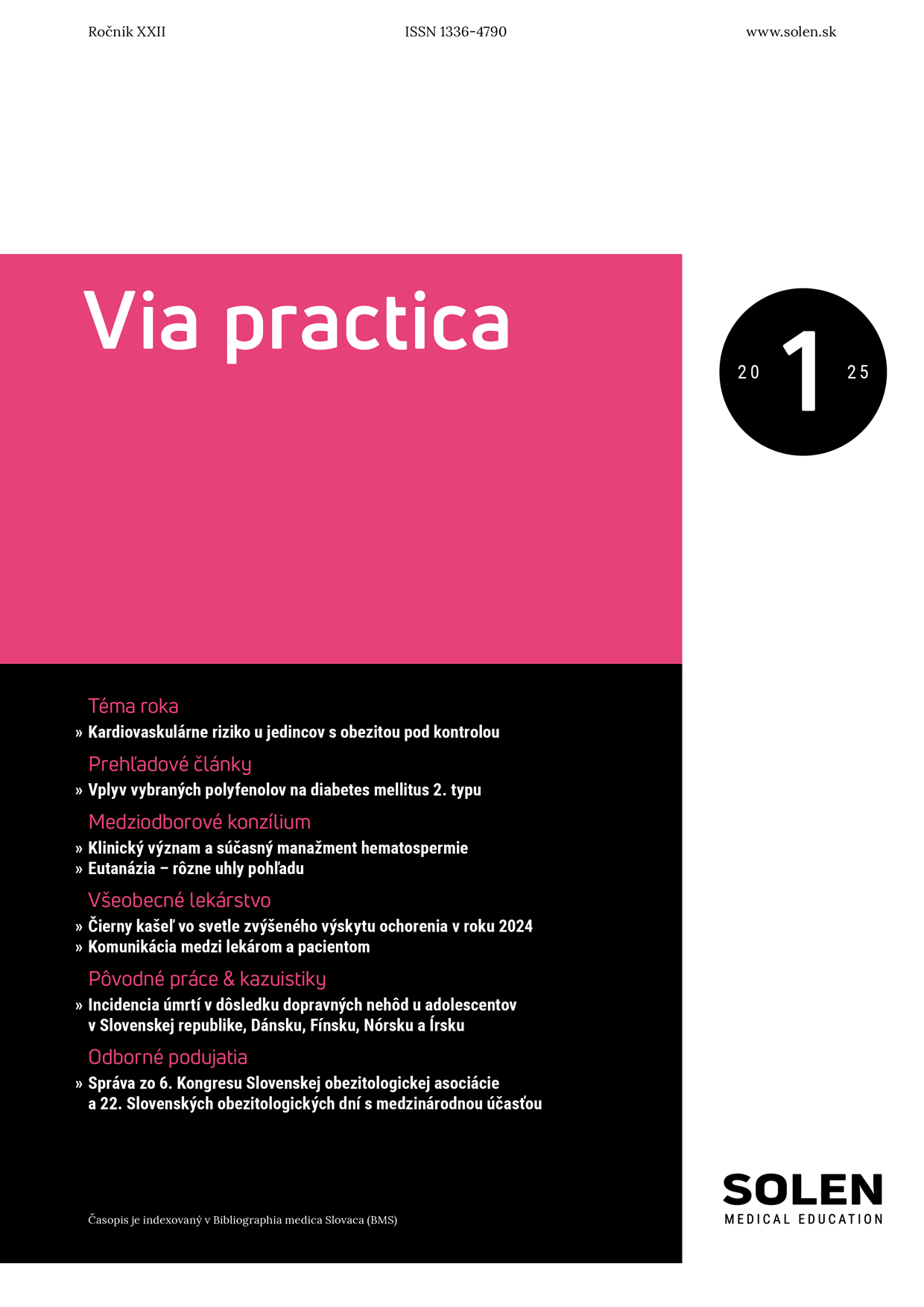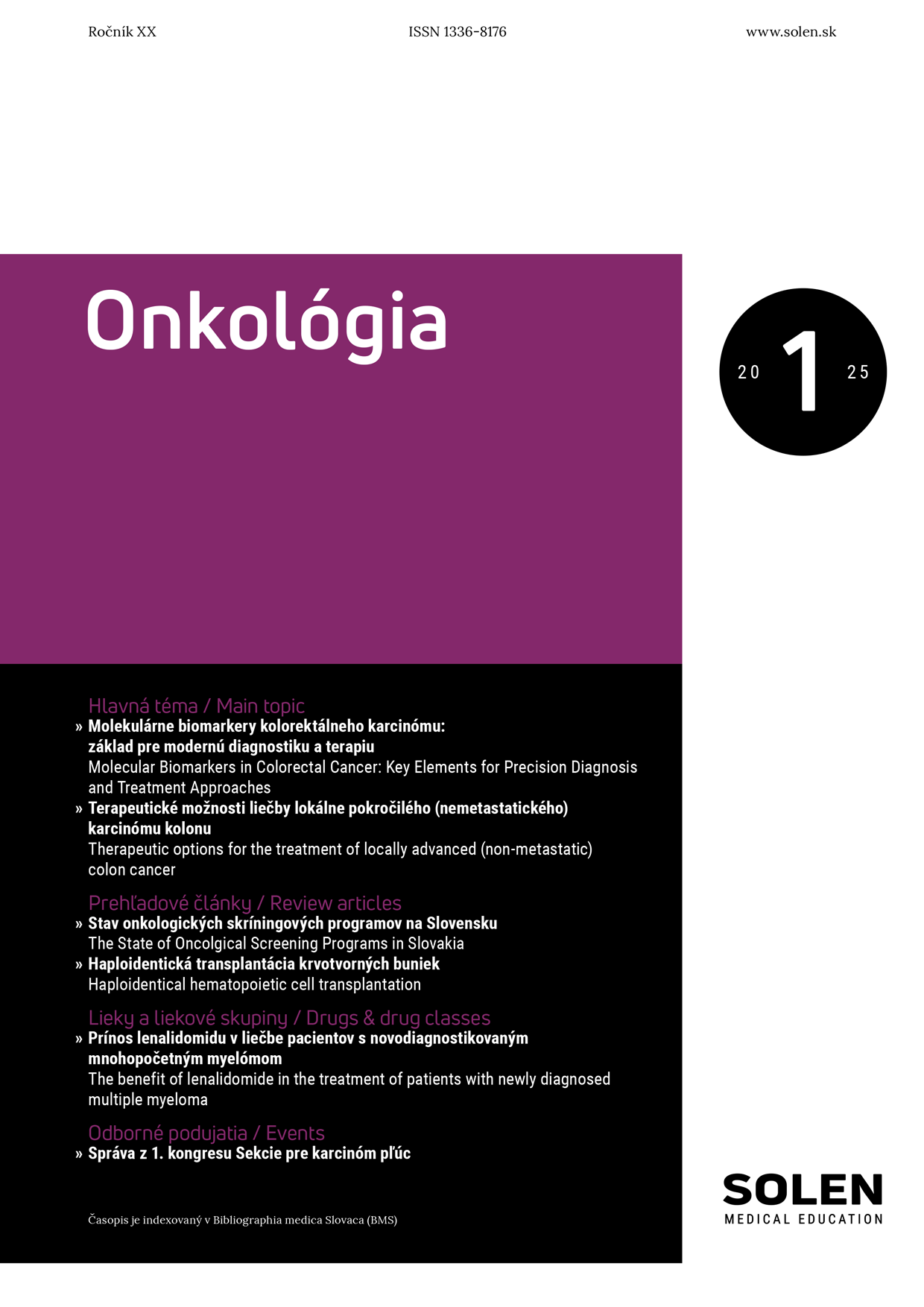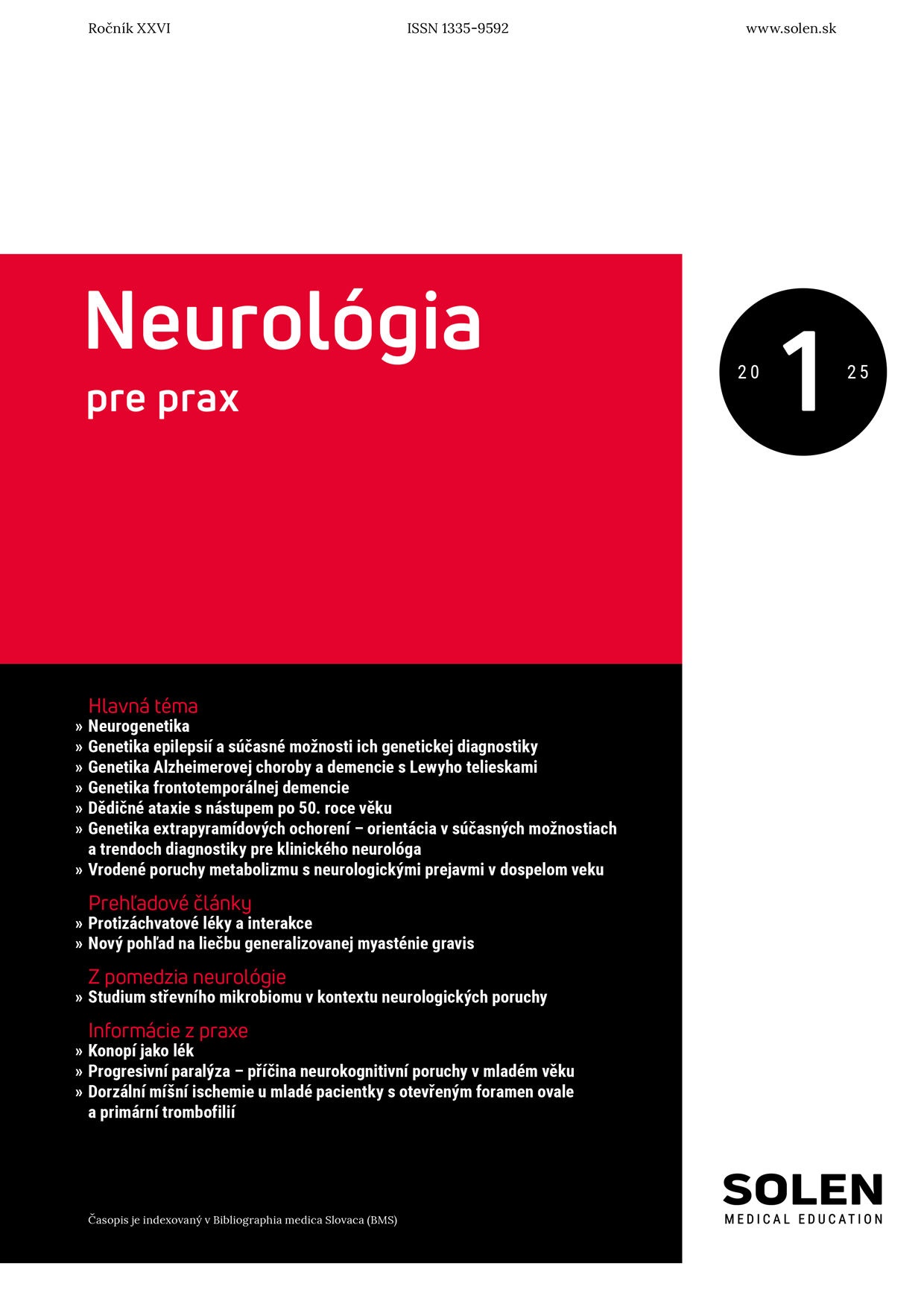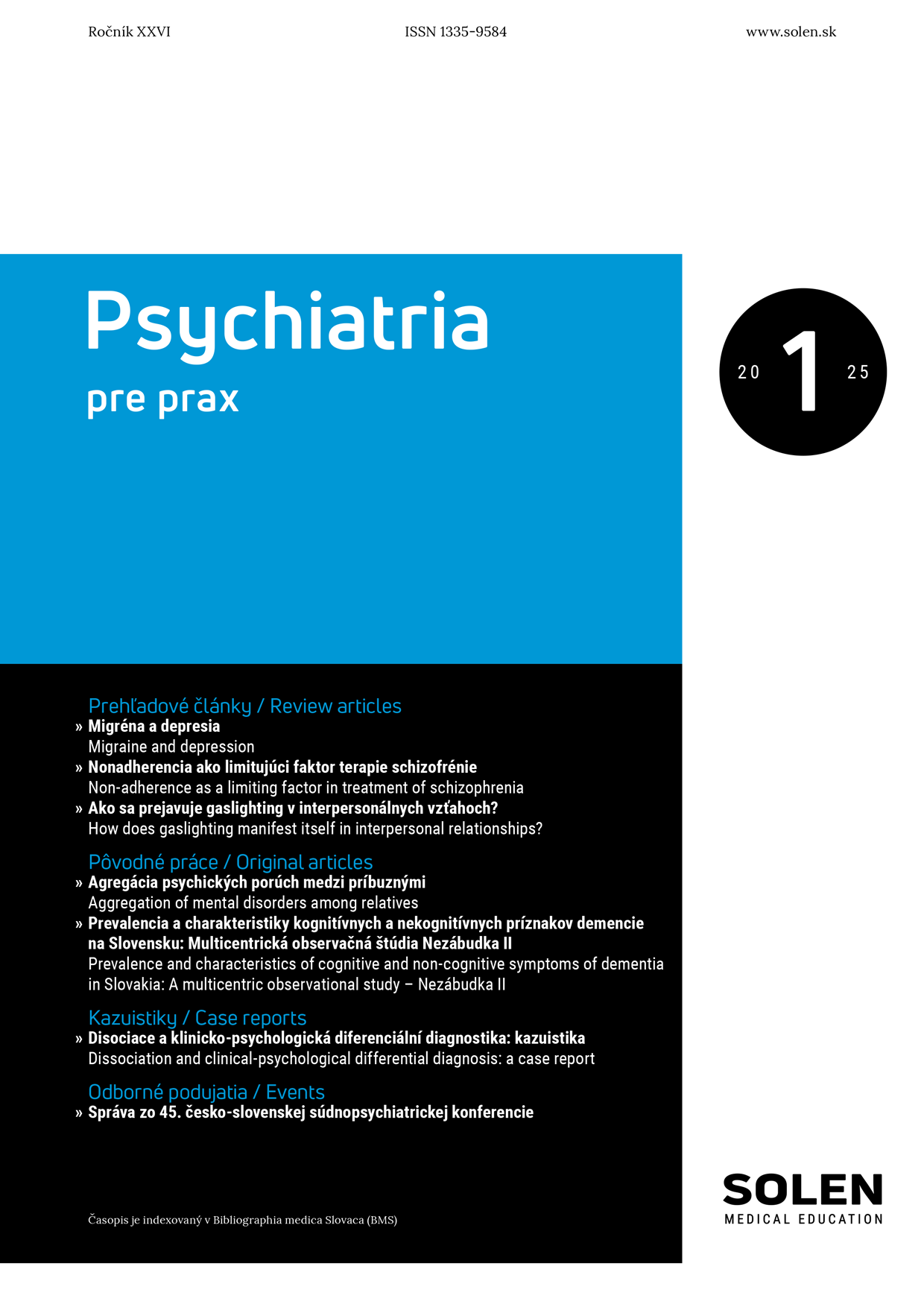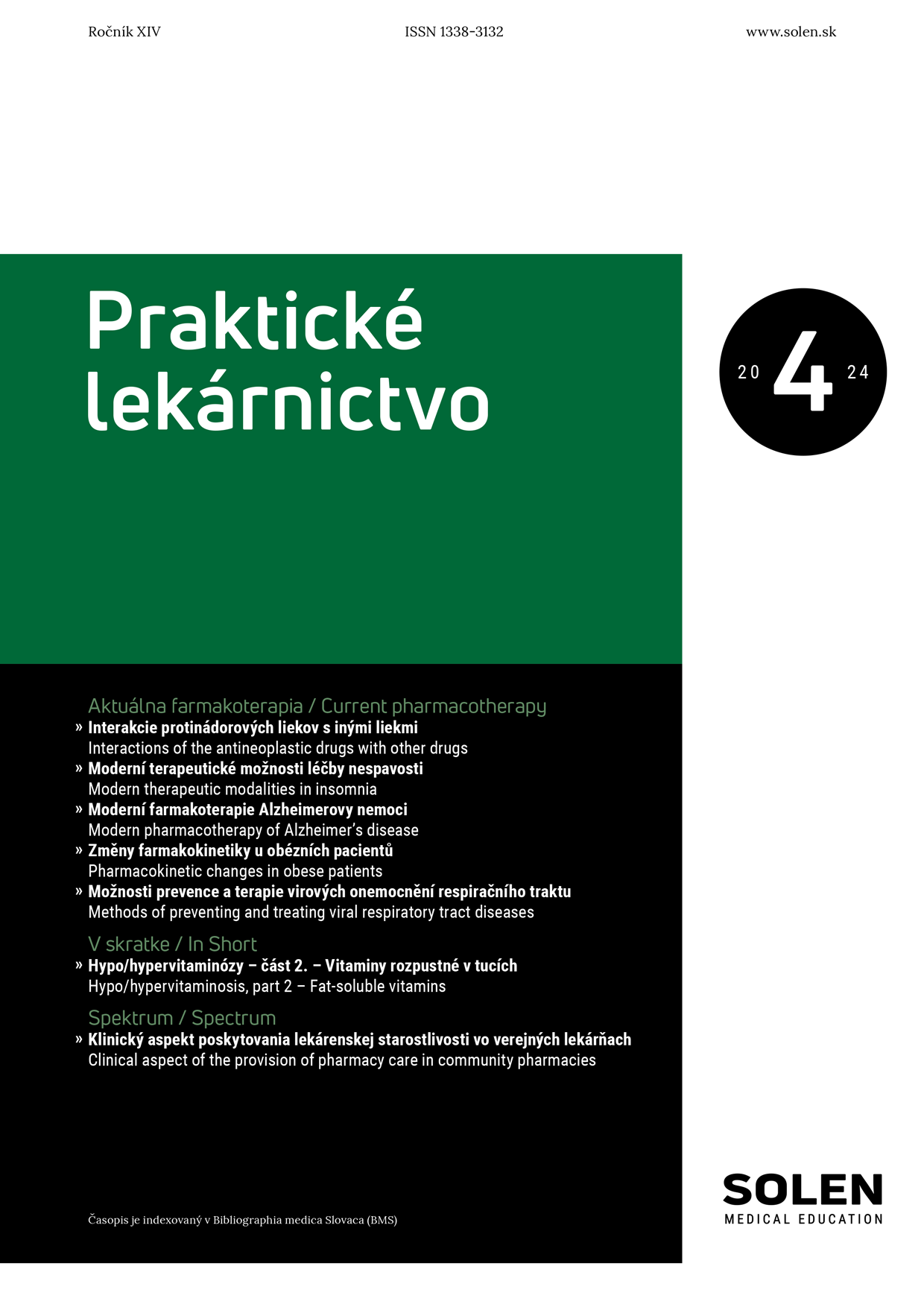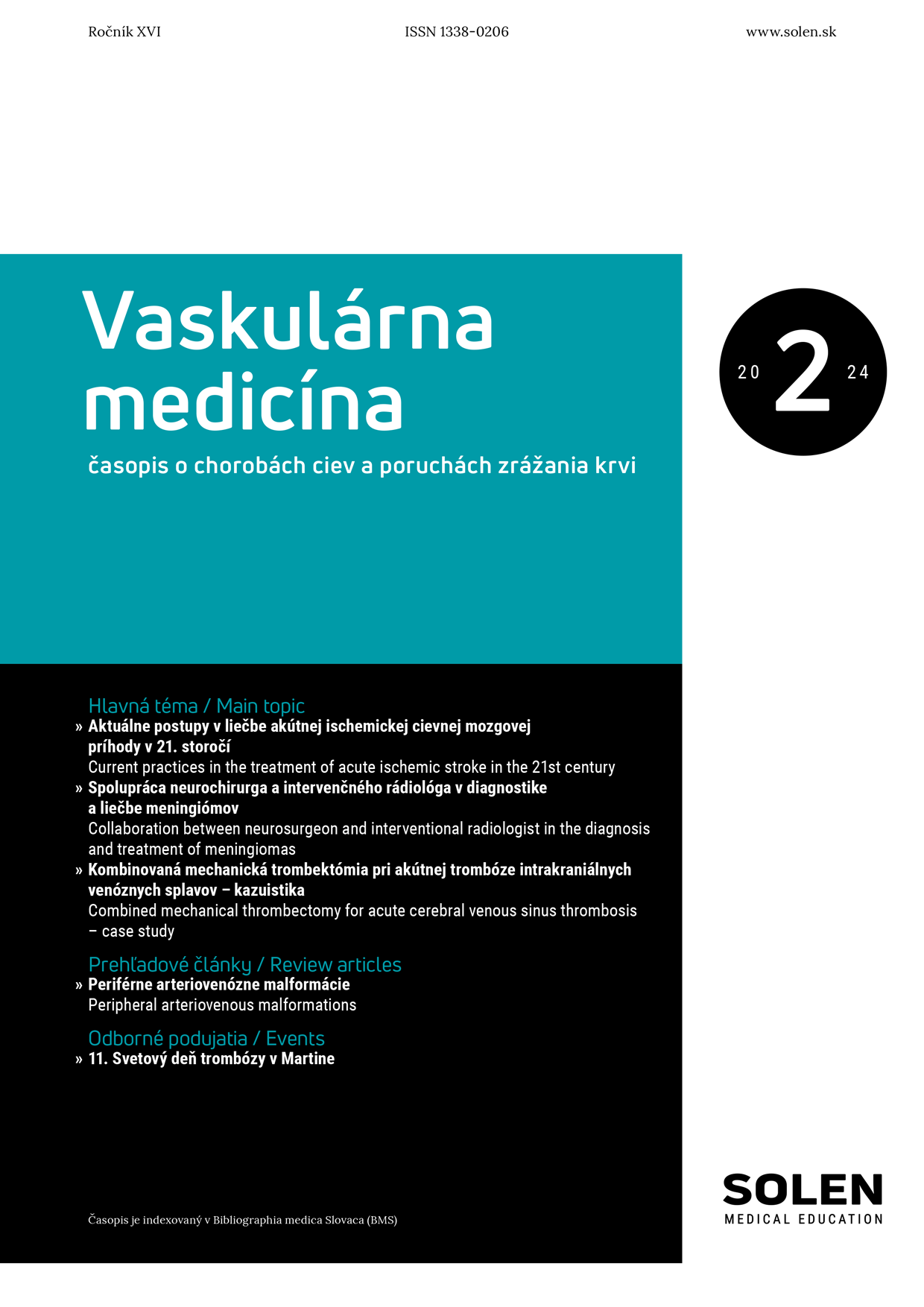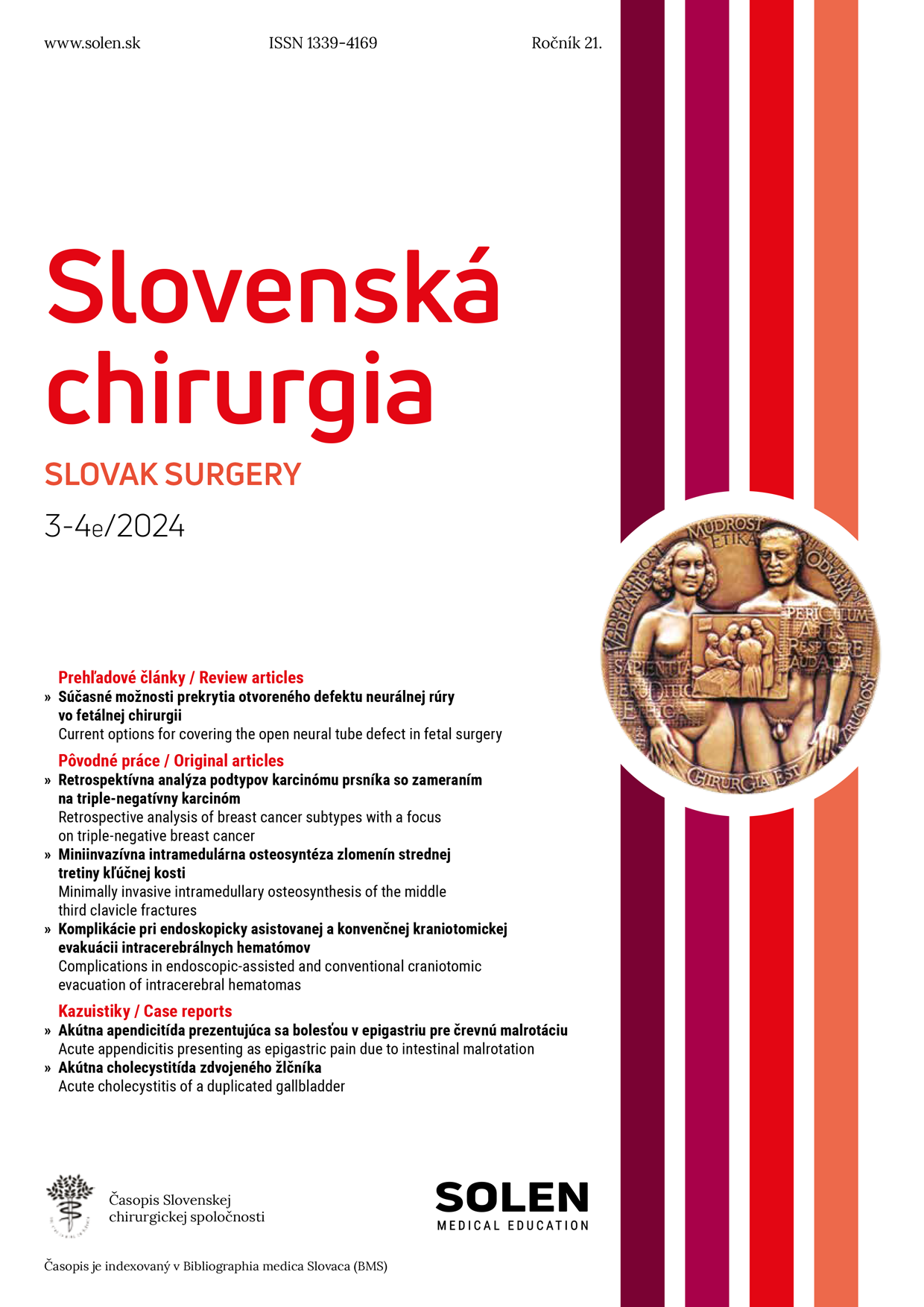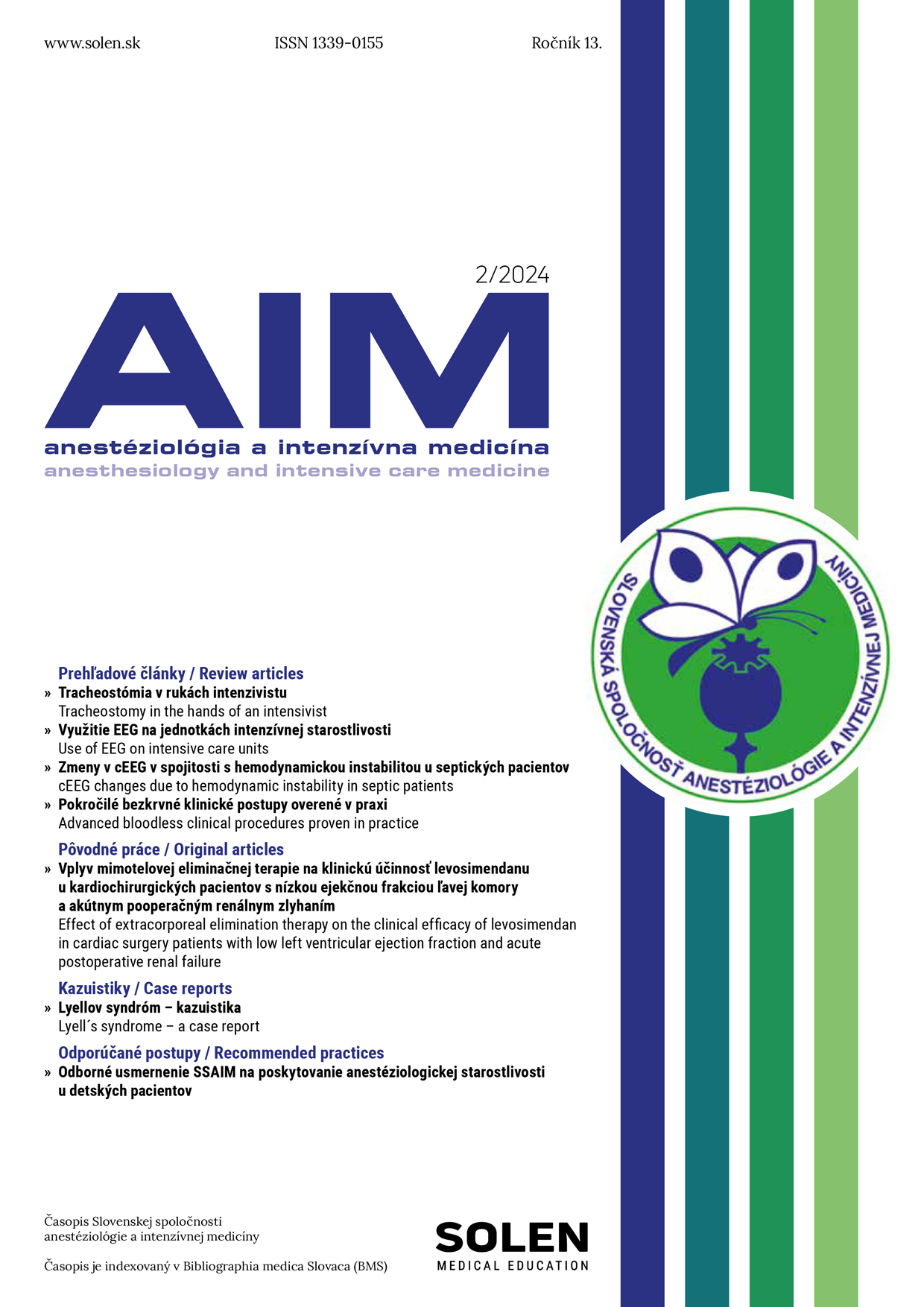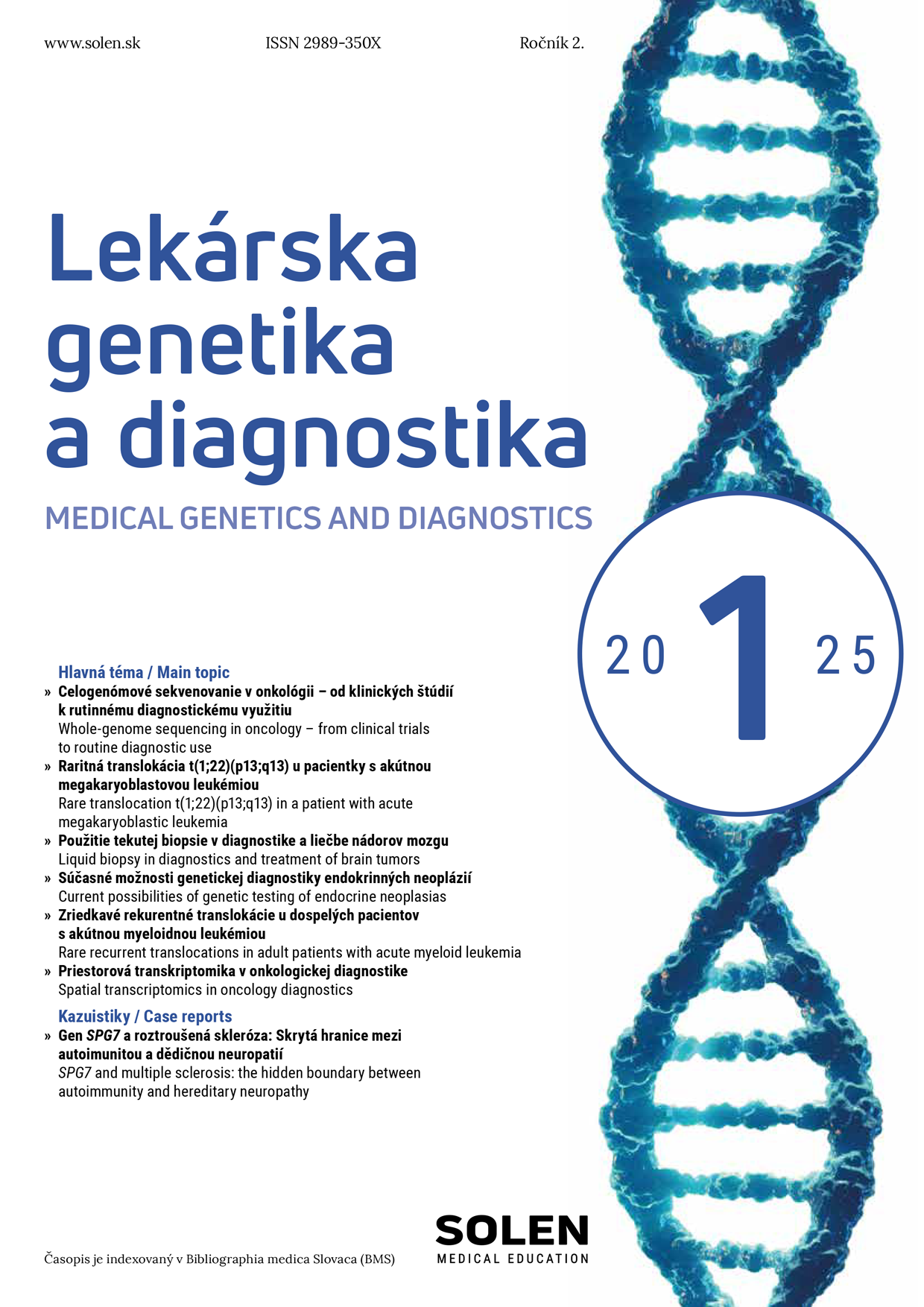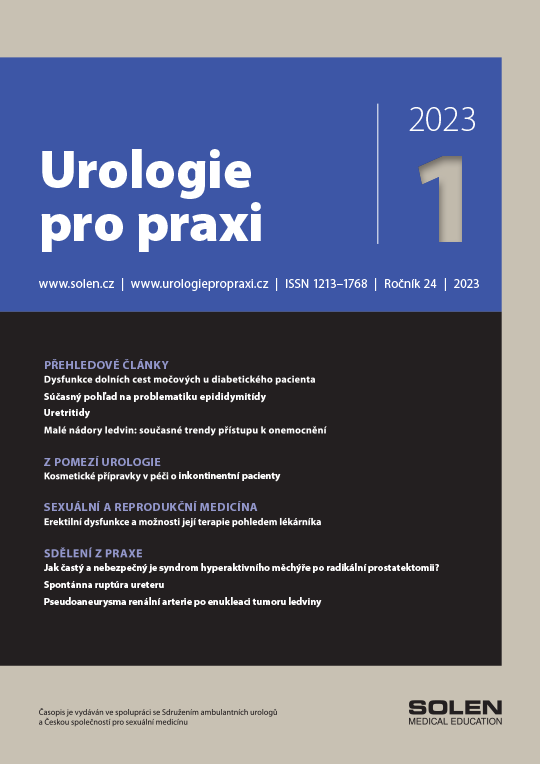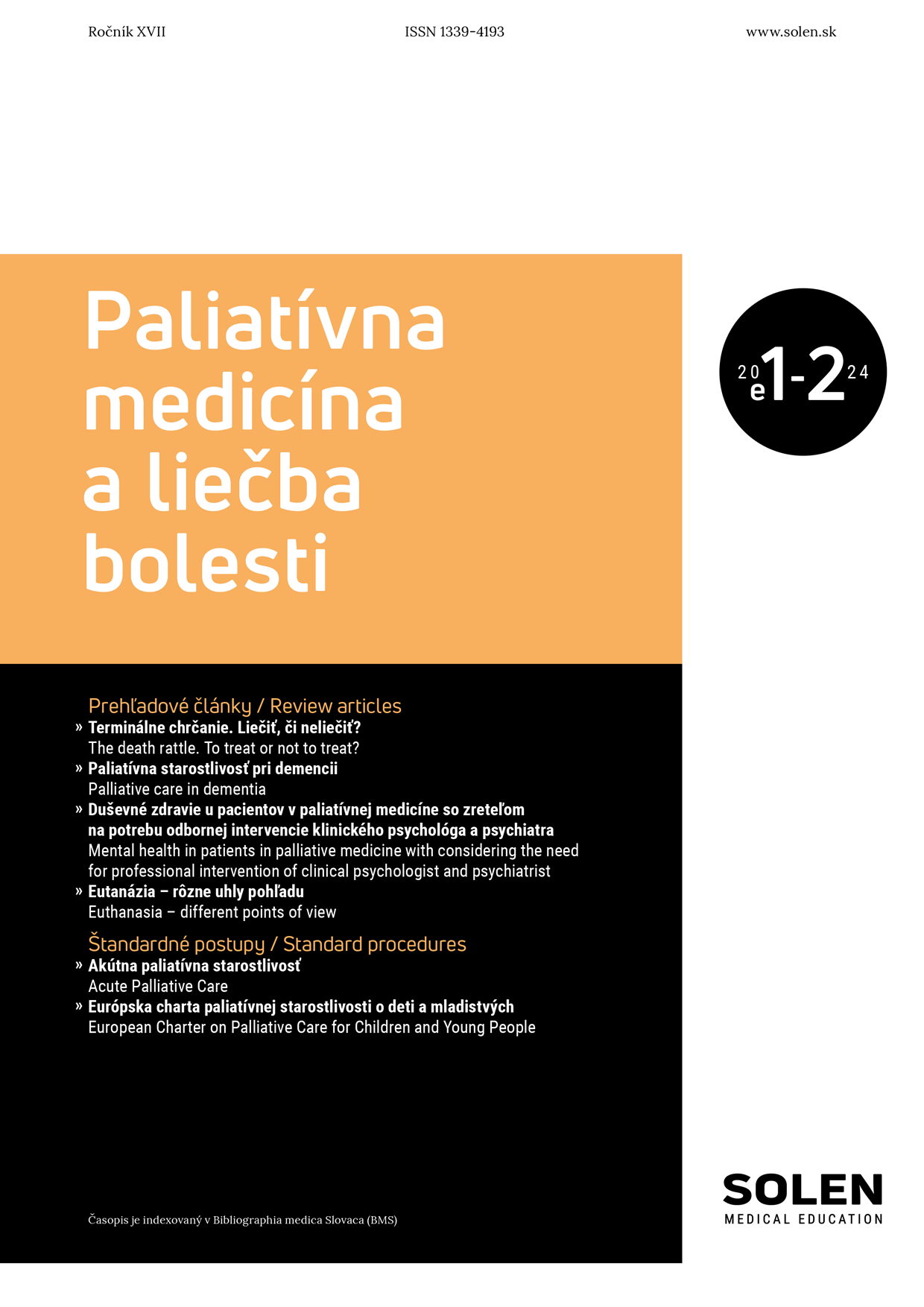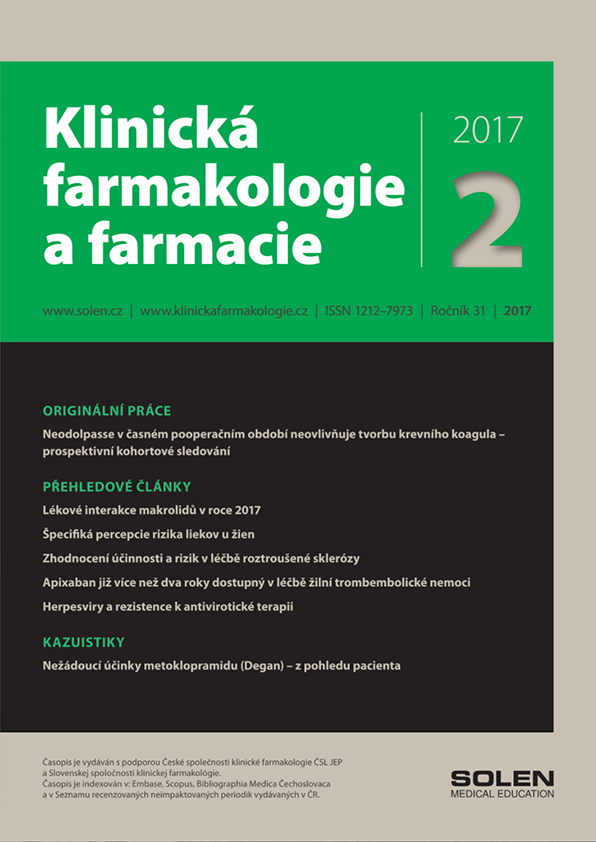Lekárska genetika a diagnostika 1/2025
Rare translocation t(1;22)(p13;q13) in a patient with acute megakaryoblastic leukemia
Acute leukemia is the most common oncological disease in children, with acute myeloid leukemia (AML) accounting for 15-20% of cases. Acute megakaryoblastic leukemia (AMKL) is a rare subtype of acute myeloid leukemia, characterized by various morphological and genetic features and the presence of abnormal megakaryoblasts. In pediatric patients, mostly in infancy, AMKL accounts for 4% to 15% of all childhood AML cases. In the presented case of a 15-day-old patient with AML type M7, we detected a rare recurrent translocation t(1;22)(p13;q13) by cytogenetic analysis at the time of diagnosis. The result of this translocation is the fusion of the RBM15::MKL1 genes, which we confirmed by fluorescence in situ hybridization. Unlike most other AMKL cases with recurrent translocations, patients with the t(1;22)(p13;q13) translocation respond well to chemotherapy and have a favorable prognosis. Cytogenetic analysis plays an irreplaceable role in the diagnosis of hematological malignancies, and together with FISH and molecular methods, it enables the detection of various aberrations and contributes to patient stratification and subsequent treatment.
Keywords: AMKL, karyotype, t(1;22)(p13;q13), RBM15, MKL1



